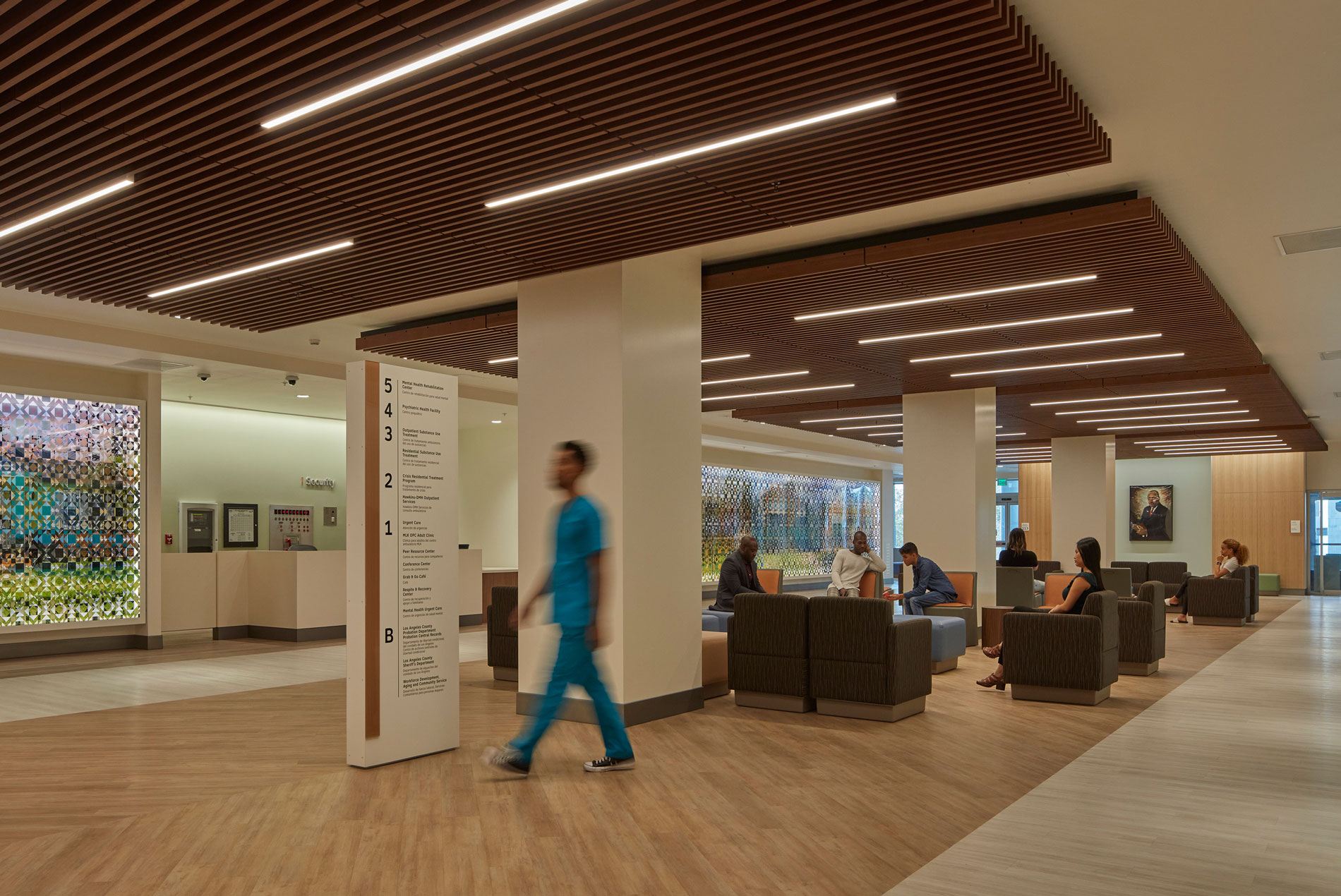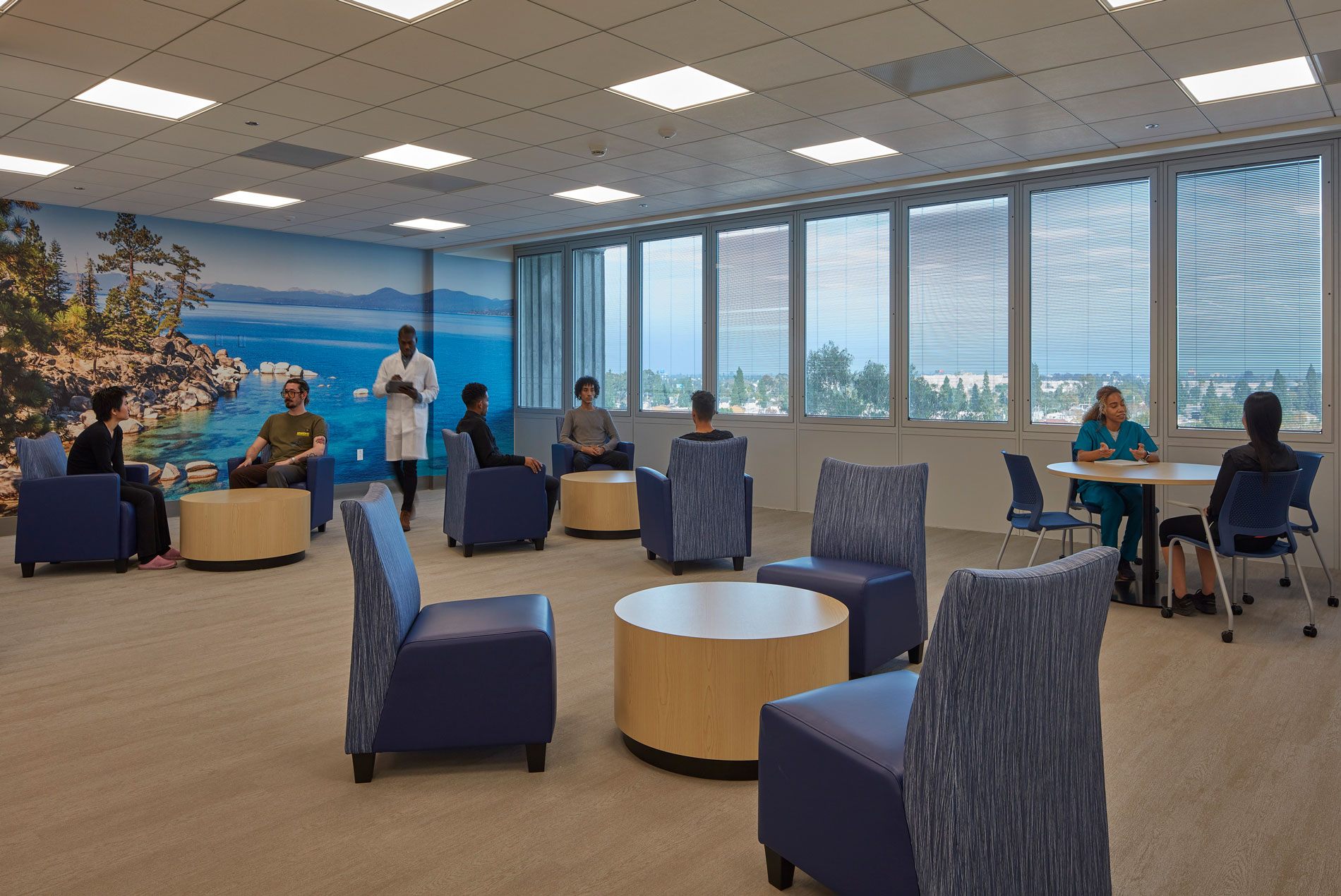Mike Funderberg and Hunvey Chen of the design-build team Bernards + HOK discuss the rapid planning and construction of Los Angeles County’s new Mark Ridley-Thomas Behavioral Health Center.
The Mark Ridley-Thomas Behavioral Health Center fills an urgent need in Los Angeles County by providing comprehensive care and support to people living with mental illness, substance use disorders and housing insecurity.
For the first time in one location, Los Angeles’ most vulnerable population can access services from a half dozen County departments, including mental health, public health and workforce development. In addition to offering a new model of integrated care, the Behavioral Health Center breathes new life into a historic public hospital that had been shuttered for over a decade.

Mike Funderberg of Bernards and Hunvey Chen of HOK.
In the following Q&A, Mike Funderberg and Hunvey Chen of the Bernards + HOK design-build team discuss the 20-month transformation of a 500,000-sq.-ft. legacy building into a state-of-the-art hub for behavioral health.
What about this project initially excited or inspired you?
Hunvey Chen, regional leader of Healthcare for HOK’s Los Angeles studio: This project is so transformative because it addresses a huge need. Drive around Los Angeles for any length of time and you’ll see people experiencing homelessness. The reasons for that are many—from LA’s favorable climate to the fact that Los Angeles County, with nearly 10 million people, is the largest county in the nation. We also know that homelessness and behavioral health go hand in hand. So being part of the County’s response and solution to this problem is both exciting and inspiring.
Mike Funderberg, vice president for Bernards: This project is just so full of purpose and meaning. Los Angeles County had a 500,000-sq.-ft. property that was basically wasting away. This project makes the most of that opportunity. It creates a space designed to change people’s lives. You have all these services under one roof with the Department of Mental Health being the largest building occupant. When you have a project that is this full of purpose, it is easy to make every carpenter, every pipefitter, every architect, every engineer care about the job. It makes the work more meaningful, special and—ultimately—successful.

The Behavioral Health Center’s first floor features a light-filled reception with public art, a café and a peer resource center.
How did design-build delivery contribute to the success of this project?
Funderberg: This project had one primary goal: to deliver by a certain date. From the moment we signed the contract with the Department of Public Works, we had 20 months to deliver. By comparison, a typical design-bid-build project of this size in Los Angeles would take 36 to 40 months. We had to get moving right away regardless of the challenges, including the fact that California’s codes for mental health facilities were still being written. There was a lot of risk on the table for HOK and Bernards. It required trust in each other and constant communication.
Chen: Fortunately, our team is experienced in designing for behavioral health and could draw on lessons from projects elsewhere even as national guidelines and California codes were being developed. The bigger questions we had were: Can the team develop plans for permitting in this timeframe? Can the construction team frame and drywall a building this size within the time constraints? Is it even possible? To me, design-build is about eliminating barriers. It’s about early identification of any problems that could slow down or stall the project and proactively applying resources so those challenges don’t impact the project’s delivery and success.
How does a design-build project for a public agency like Los Angeles County Department of Public Works differ from design-build for a private entity?
Funderberg: With a public owner there tends to be a lot of hoops you must jump through to make everything move. Not that bureaucracy is necessarily a bad thing. With a government like LA County, which is responsible for millions of people, you need checks and balances and accountability. Private owners, however, don’t have that same level of bureaucracy. They are more comfortable with how design-build shifts the risk and much of the decision-making to the project team.
Chen: That can be one of the biggest challenges for public entities, particularly large ones. They just may not be accustomed or equipped to let others make decisions or to provide answers and solutions as quickly as we need them under the design-build model.
Funderberg: It is improving, though. Here in Los Angeles, the County is understanding how design-build operates and how to better participate in that partnership to ensure projects meet and exceed the public’s expectations. Design-build can be difficult for public agencies because for years they awarded projects solely on the lowest bid. Design-build requires them to also consider other factors that provide value, like quality, speed and overall return on investment.

The Behavioral Health Center offers services from six different County agencies assisting people with social and mental health needs.
What makes for a successful design partner within the design-build model? Conversely, what makes for a successful build partner?
Funderberg: I just come back to the word: confidence. As a general contractor, I need to know my architect is confident. I need to know that when I call Hunvey with a question or concern, she can provide an answer and, if necessary, an action plan for how to correct the situation. Confidence is everything in design. It was on this project. We were building before Hunvey and her team finished the design. We were building before we had a permit and spending tens of millions of dollars in advance on building materials. That was the only way to deliver. So, I had to have complete faith and confidence in the early work and continued support of the design team.
Chen: As a designer, what I need most from the builder is clear and open communications. For a project like this with such a short timeframe, my biggest concern is holding back the build team. I need to know what immediate information they need to move the project forward. That requires a lot of dialogue between the designer and builder. Not all contractors are good at that but Bernards is. Communications is what made this project successful, and it is what designers need most from contractors.